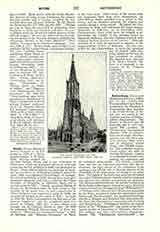

Rothe, DAVID, Bishop of Ossory (Ireland), b. at Kilkenny in 1573, of a distinguished family; d. April 20, 1650. Having studied at the Irish College, Douai, and at the University of Salamanca, where he graduated doctor in civil and canon law, he was ordained in 1600, and proceeded to Rome. From 1601 to 1609 he was professor of theology and secretary to Archbishop Lombard, and on June 15, 1609, was appointed Vice–Primate of Armagh. He arrived in Ireland in 1610, having been made prothonotary Apostolic, and held a synod for the Ulster Province at Drogheda, in February, 1614, and a second synod in 1618. Though appointed Bishop of Ossory on October 10, 1618, he had, owing to the severity of the penal laws, to seek consecration in Paris, where he was consecrated early in 1620; he returned to Ireland in the winter of 1621. As early as 1616, Dr. Rothe had published the first part of his famous “Analecta” and the completed work was issued at Cologne (1617-19); a new edition was brought out by Cardinal Moran in 1884. In 1620 he published “Brigida Thaumaturga”, at Paris, followed by “Hiberniae sive Antiquioris Scotie” in 1621 at Antwerp, and “Hibernia Resurgens” at Paris, in the same year. Other works of his except some few fragments have long since disappeared. In 1624 Bishop Rothe presided over a synod at Kilkenny, and he labored zealously for religion and country during a trying period. He joined the Confederates in 1642, and welcomed the papal nuncio, Rinuccini, to Kilkenny, on November 14, 1645. Unfortunately, three years later, he refused to acknowledge the validity of the censures issued by Rinuccini, believing that the Supreme Council were acting in the best interests of the country. Although seriously ill in 1649, he continued to minister to the plague-stricken citizens of Kilkenny. He was compelled by the Cromwellians to leave his episcopal city March 28, 1650, but, being robbed on the way, he was permitted to return. His remains were interred in St. Mary’s Church, but there is a cenotaph to his memory in St. Canice’s Cathedral.
W. H. GRATTAN-FLOOD

